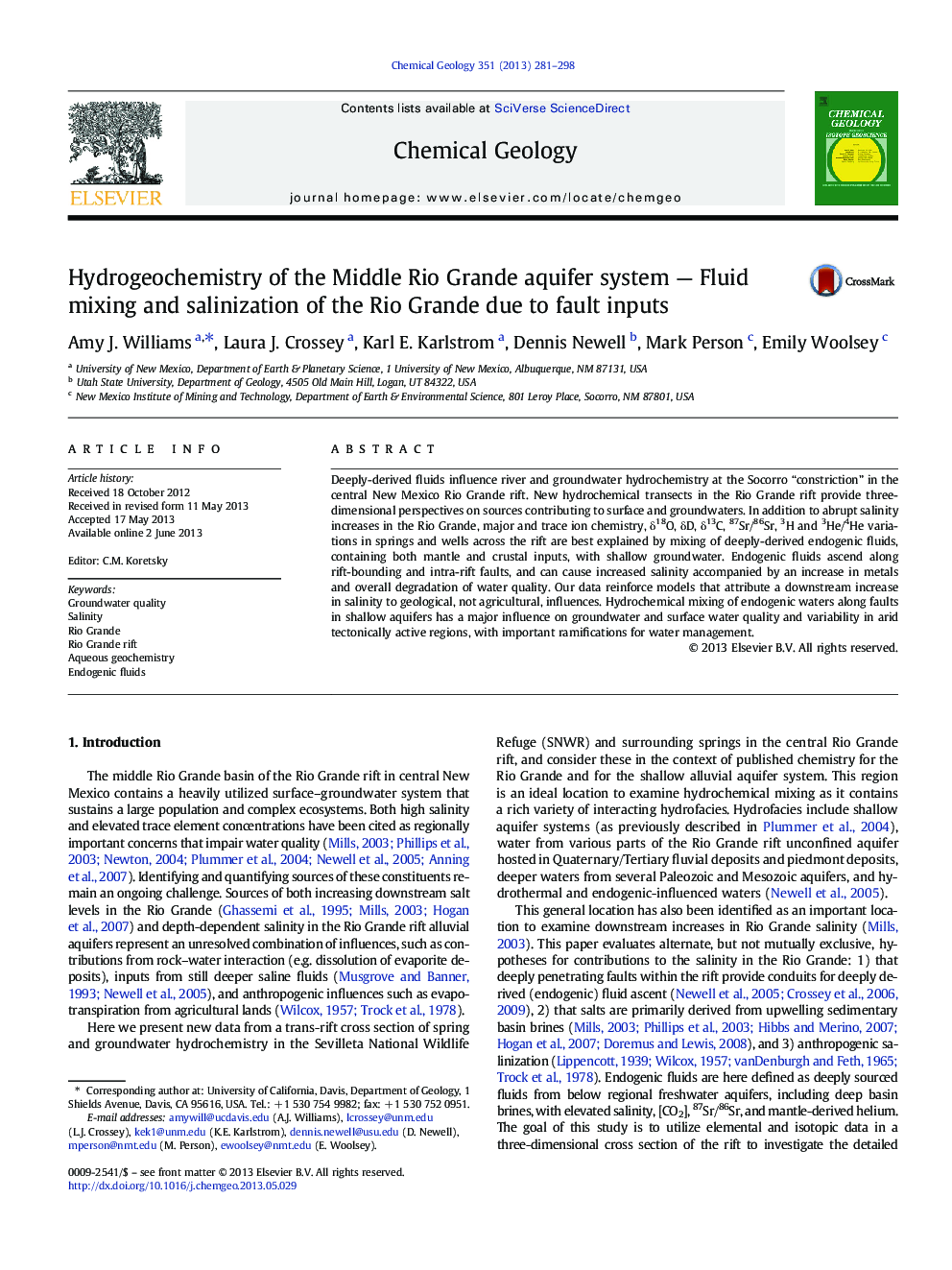| Article ID | Journal | Published Year | Pages | File Type |
|---|---|---|---|---|
| 6436934 | Chemical Geology | 2013 | 18 Pages |
â¢We developed a model for water quality degradation in the Rio Grande rift.â¢Models show degradation due to tectonically controlled endogenic fluid inputs.â¢Geochemistry is best explained by mantle and crustal fluid inputs.
Deeply-derived fluids influence river and groundwater hydrochemistry at the Socorro “constriction” in the central New Mexico Rio Grande rift. New hydrochemical transects in the Rio Grande rift provide three-dimensional perspectives on sources contributing to surface and groundwaters. In addition to abrupt salinity increases in the Rio Grande, major and trace ion chemistry, δ18O, δD, δ13C, 87Sr/86Sr, 3H and 3He/4He variations in springs and wells across the rift are best explained by mixing of deeply-derived endogenic fluids, containing both mantle and crustal inputs, with shallow groundwater. Endogenic fluids ascend along rift-bounding and intra-rift faults, and can cause increased salinity accompanied by an increase in metals and overall degradation of water quality. Our data reinforce models that attribute a downstream increase in salinity to geological, not agricultural, influences. Hydrochemical mixing of endogenic waters along faults in shallow aquifers has a major influence on groundwater and surface water quality and variability in arid tectonically active regions, with important ramifications for water management.
